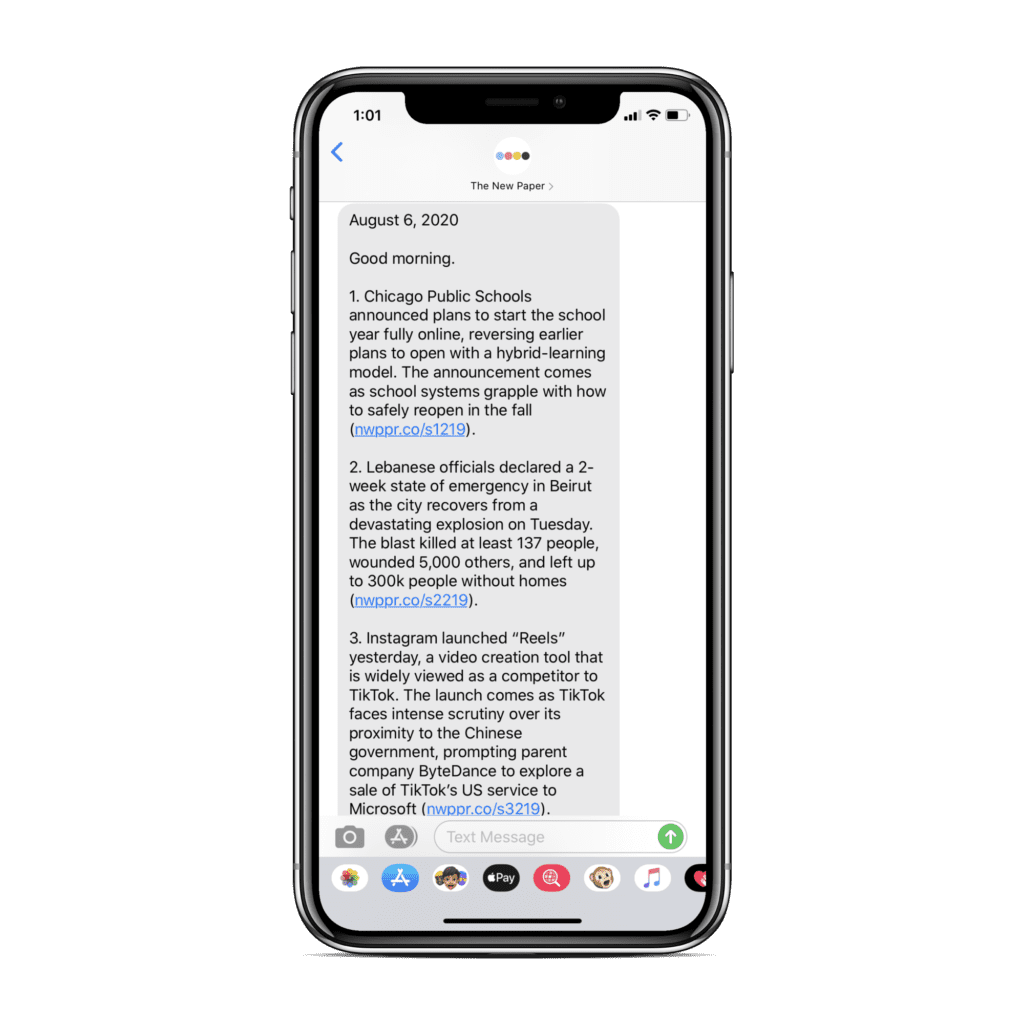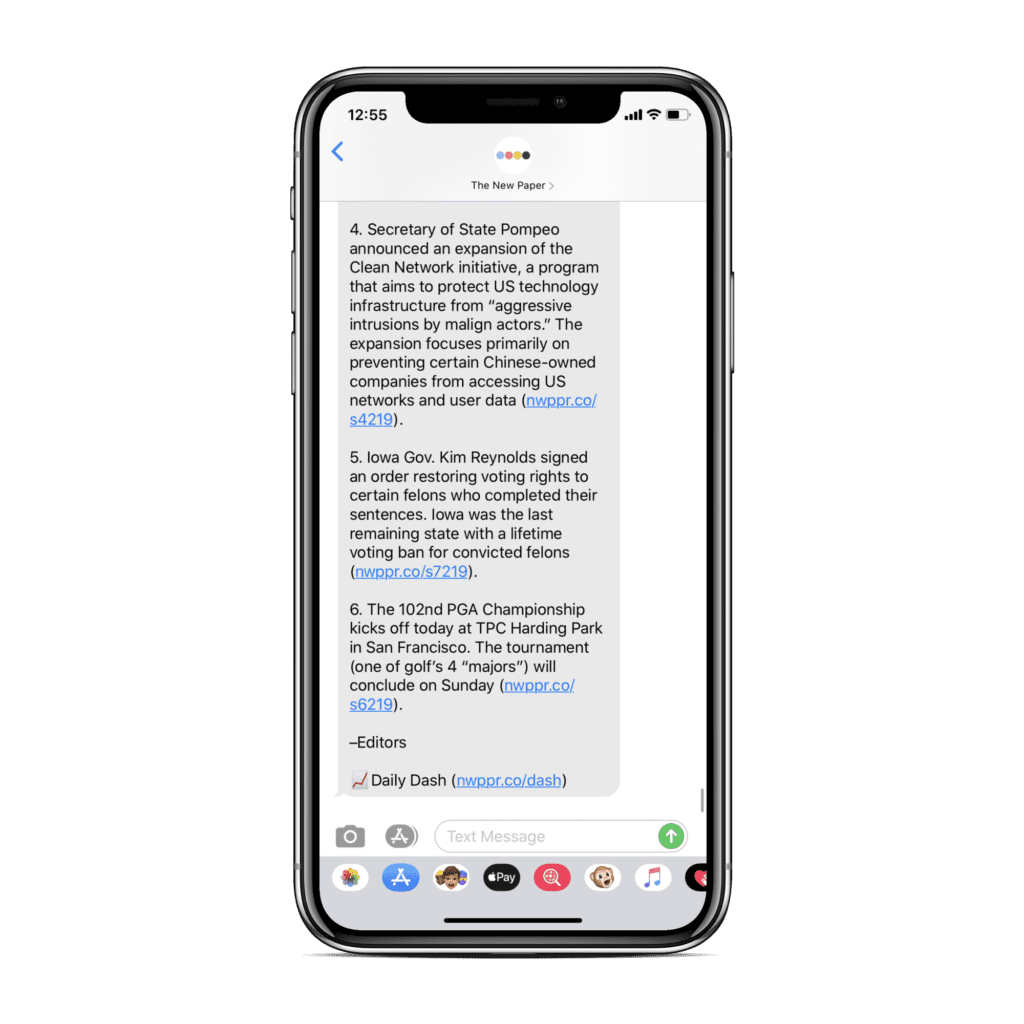|
Getting your Trinity Audio player ready...
|
Text-based notifications have a decidedly mixed reputation amongst publishers. Associated with sensationalist headlines and annoying interruptions, they can alienate the very audiences they are meant to engage with if either the content or frequency aren’t pitched exactly right.
Fast forward to 2020 and the Covid-19 pandemic has changed the zeitgeist with publishers looking to react swiftly to changing circumstances, and audiences demanding news notifications as they happen.
Publishers wade into text-based notifications
The Arizona Republic started sending out free text notifications in March, sending up to four texts on the pandemic daily. The title varies its approach, and the notifications range from updates on news conferences by the state Governor to dialoguing with readers about hobbies they pursued in lockdown. Over 2,500 people have signed up for the service which is powered by Subtext, a platform that allows journalists to send text message updates to readers.
BuzzFeed News was another publisher that launched a text-based notification service earlier this year, with journalist Mat Honan texting readers the latest Covid-19 numbers and news. Speaking to the Wall Street Journal, Honan comments, “I’ve viewed this from the get-go like a form of service journalism, and an interesting way to both give and receive information”. Audience replies have included photos from a long-haul trucker traversing the country and a message from someone facing an eating disorder whilst locked down.
This comes after The New York Times put a brake on text message-based notifications in 2017 after it found that whilst readers engaged heavily with the medium, “responding to them required more resources than expected”, according to Ben Koski, director of interactive news at The Times.
Text message-based notifications as a revenue stream
Now, one new publisher has taken this a step further and based its entire business model on text notifications. Enter The New Paper, an Indiana-based publication that curates and summarizes the day’s top stories into a concise daily text message.
Started by Michael Aft and John Necef, Harvard Business School and Georgetown grads who worked at LinkedIn, The Hustle, and Accel-KKR, The New Paper is already profitable – in only six months of private beta using word of mouth and paid acquisition, the subscription-based model has over 7,000 paid subscribers representing $400,000 in annualized recurring revenue. The company offers users a 7-day free trial, after which it charges $5 per month.
Speaking to WNIP, Michael Aft, CEO, comments, “Starting the day with a common set of facts is more important than ever in today’s world. But the unfortunate truth is that it’s hard work to stay informed.”
We are laser-focused on one thing: making fact-first news easy to consume.
Michael Aft, CEO, The New Paper
By launching The New Paper, Aft is challenging one of the preconceived notions of text-based notifications – that the medium works best for narrowly tailored subjects or particular moments in time. Indeed, The New Paper is focusing its editorial on a much broader set of topics, including business, technology, finance, politics, the economy, and world news. Aft adds, “but that doesn’t mean that you won’t see a highly-impactful story that covers a specific topic in science, sports, or something else.”
The title was funded by $300k of pre-seed funding in 2019, and current investors include a combination of angel investors and the VC fund Elevate Ventures. As for its head office location in Indianapolis, Aft says, “We found that Indiana is home to a very motivated group of organizations that are focused on making Indiana the next major innovation center. A great example of that is our largest investor, Elevate Ventures which is an Indiana state-backed VC fund. We secured $80k in funding through a pitch competition that specifically aims to drive early-stage innovation in the state.”
And the immediate future? Aft says The New Paper is looking to increase its staff count which is currently in single figures, as well as expand its product range, commenting, “We have focused on SMS because text messages have a 98% open rate, as opposed to email which is only 20%, but in the future we plan to develop an ecosystem of news products that offer the first touch of daily fact-first news across channels.”
Whilst only time will tell if The New Paper has longevity, the current thirst for immediate, fact-first news in a world beset by Covid-19 means that text message-based notifications could be a publishing medium whose time has finally arrived.







